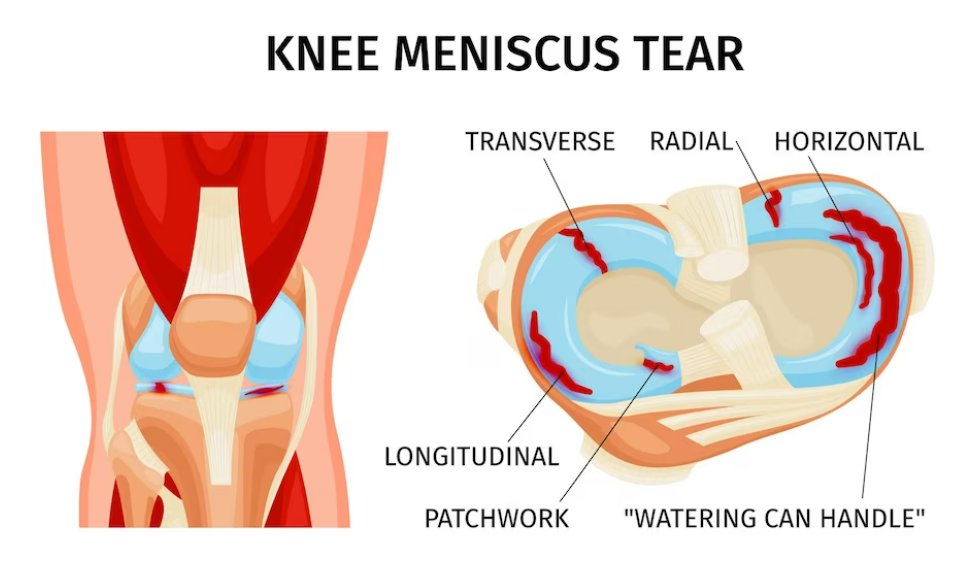
It is essential to take care of the knee joint to maintain mobility since it is important for walking. Young and old alike might suffer from knee discomfort, which is a relatively frequent ailment. It is possible that both have different reasons. Knowing there is a problem and treating it as soon as possible are considered important. In general, knee pain can be attributed to degenerative or traumatizing aging-related conditions.
One of the finest things individuals can do for their joints and the rest of their body is to stay active. But accidents do happen, and knee injuries are common. Sprained ligaments, meniscus tears, tendinitis, and a runner's knee are a few of the most typical issues. An earlier knee injury that was not adequately managed may occasionally flare up or hurt constantly.
Ageing and the ongoing strain and wear on the knee joint (including arthritis) are the root causes of many knee issues. Injuries or quick movements that strain the knee might also cause other knee issues.
Consult a top orthopaedic hospital if you require knee pain relief.

5 Common Reasons Behind Knee Pain
Here are 5 common knee pain reasons that result in severe pain:
1. Age-related issues
Age-related issues first manifest as a minor pain in the knee that gets worse over time and occasionally feels stuck. One area of the knee may just experience discomfort, or the entire knee may experience it. It frequently goes hand in hand with knee swelling that occurs due to friction from rubbing off the cartilage polish. Depending on the severity of the condition, treatment options might range from simple medication and fluid evacuation from the knee to surgery.
2. Injury-related pain
Bones, cartilage, ligaments, or cushions may all be involved in injury-related pain. A knee injury from a twist, a tumble, or a car accident usually precedes such pain.
3. Fractures or bony injuries
Individuals are not able to keep their limb on the ground or even move it if they have a fracture or other bony injury. Typically, they are accompanied by bone oedema and deformity. Most fractures may be seen clearly on an X-ray and must be fixed surgically or with the application of plaster.
4. Ligament injuries
These are most frequently associated with sports-related injuries or falls from two-wheelers. They are initially accompanied by discomfort and swelling, but after a few weeks, they may give the impression that your knees are unstable and could twist again. An MRI is required since these injuries are not visible on an X-ray. Some ligaments naturally heal, whereas others don't. The patient's activity level, the ligament or ligaments that were torn, and whether or not there are any concomitant injuries all influence the course of treatment. Most of these operations use the keyhole (arthroscopic) approach, and the patient will probably be released the same day as your procedure.
5. Cartilage or meniscus injuries
Damage to the cartilage or meniscus may occur alone, in conjunction with ligament damage, or both. These wounds result in discomfort and a feeling of locking, which is an unexpected inability to fully extend the knee. The meniscus is repaired or removed using an arthroscopic keyhole procedure as treatment for meniscus injuries.
Consult an orthopaedic doctor if you need knee pain treatment.
Frequently Asked Questions (FAQs)
-
What causes knee pain behind the knee?
There are several reasons for knee pain. As an individual age, their knee joint may deteriorate, or they may have an injury to the knee and rip its ligament or cartilage. A popliteal cyst (Baker's cyst) and posterior cruciate ligament damage are two common disorders that produce pain behind the knee.
-
What are the five common reasons behind knee pain?
The five common reasons behind knee pain include:
-
Age-related issues.
-
Injury-related pain.
-
Fractures or bony injuries.
-
Ligament injuries.
-
Cartilage or meniscus injuries.
- How do I get rid of the pain behind my knees?
There are a few things you can try to alleviate the pain behind your knees. Firstly, apply ice or a cold pack to the area for 15-20 minutes, several times a day. This can help reduce inflammation. Additionally, try avoiding activities that worsen the pain and practising gentle stretches to improve flexibility. Using a knee brace or compression bandage may also provide support and relieve discomfort. If the pain persists or worsens, it is important to consult a healthcare professional for a proper diagnosis and treatment plan.
-
What is the major cause of knee pain?
The major cause of knee pain can vary depending on the individual and their specific situation. Some common causes of knee pain include injuries such as ligament tears, strains, or sprains, and conditions such as arthritis or tendinitis. Other factors that can contribute to knee pain include overuse, improper form during physical activity, or excess weight putting strain on the joints. It is important to consult with a healthcare professional to determine the specific cause of knee pain and receive appropriate treatment.





















 4 Min Read
4 Min Read














